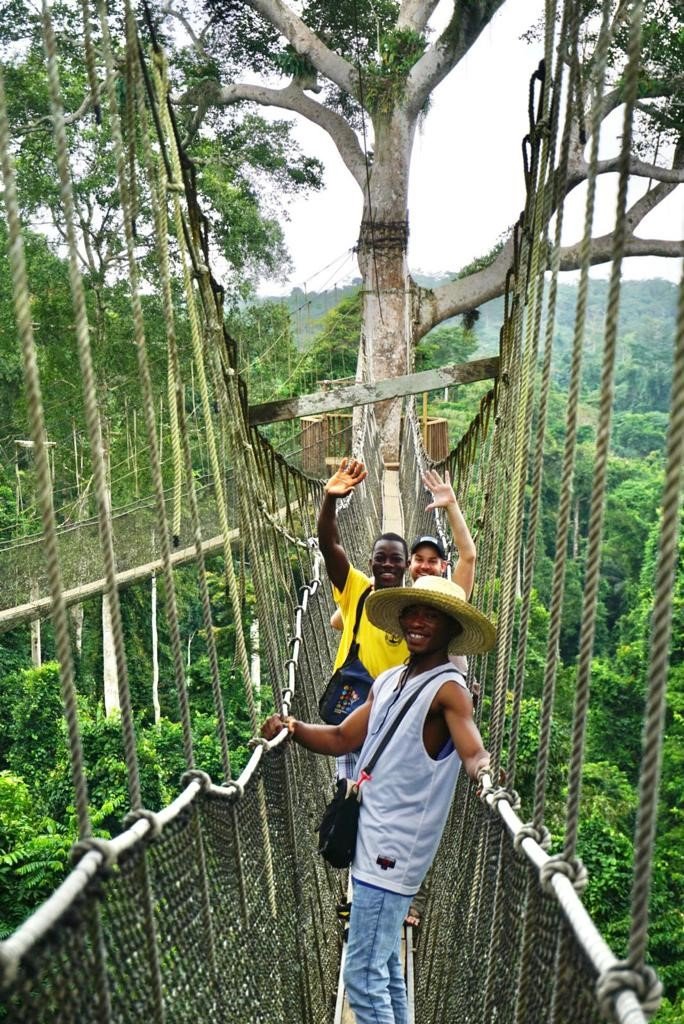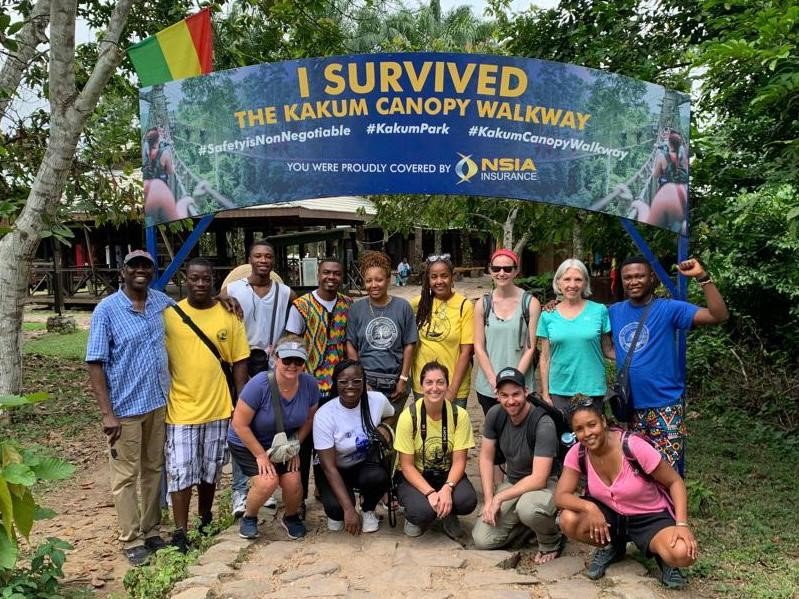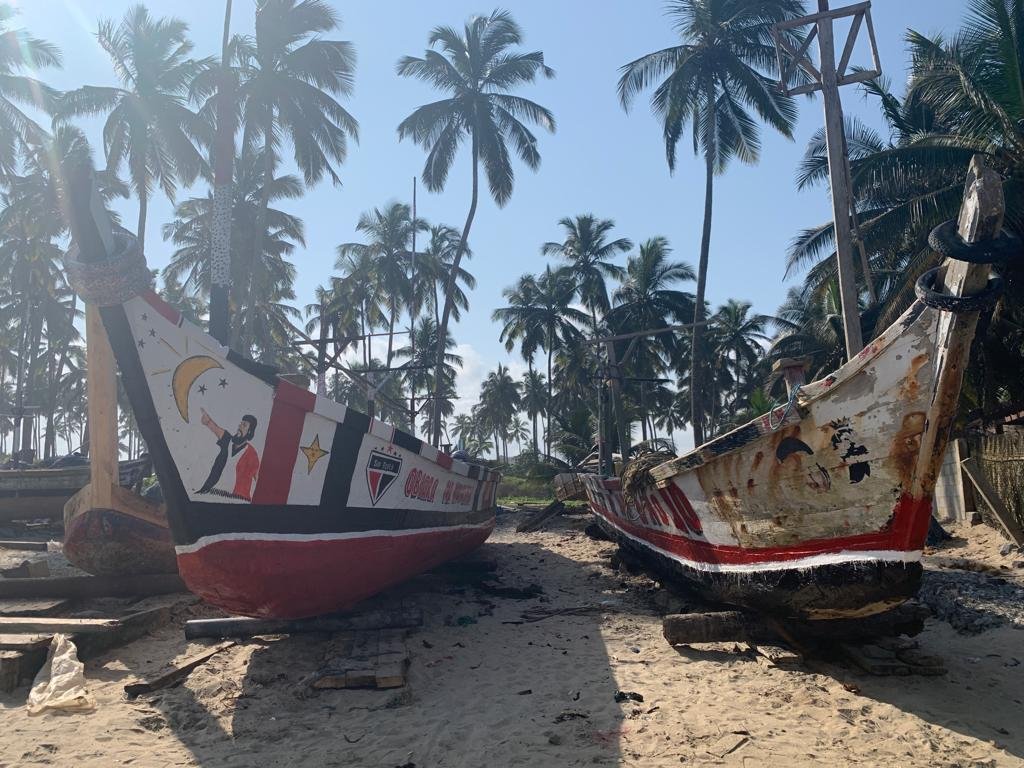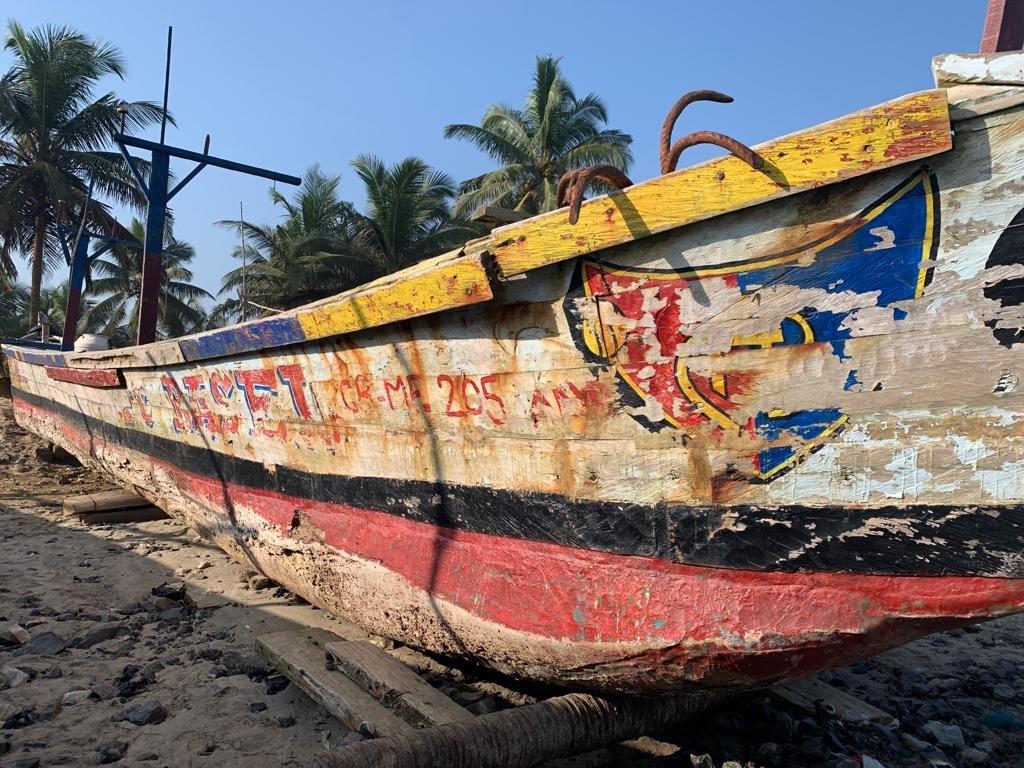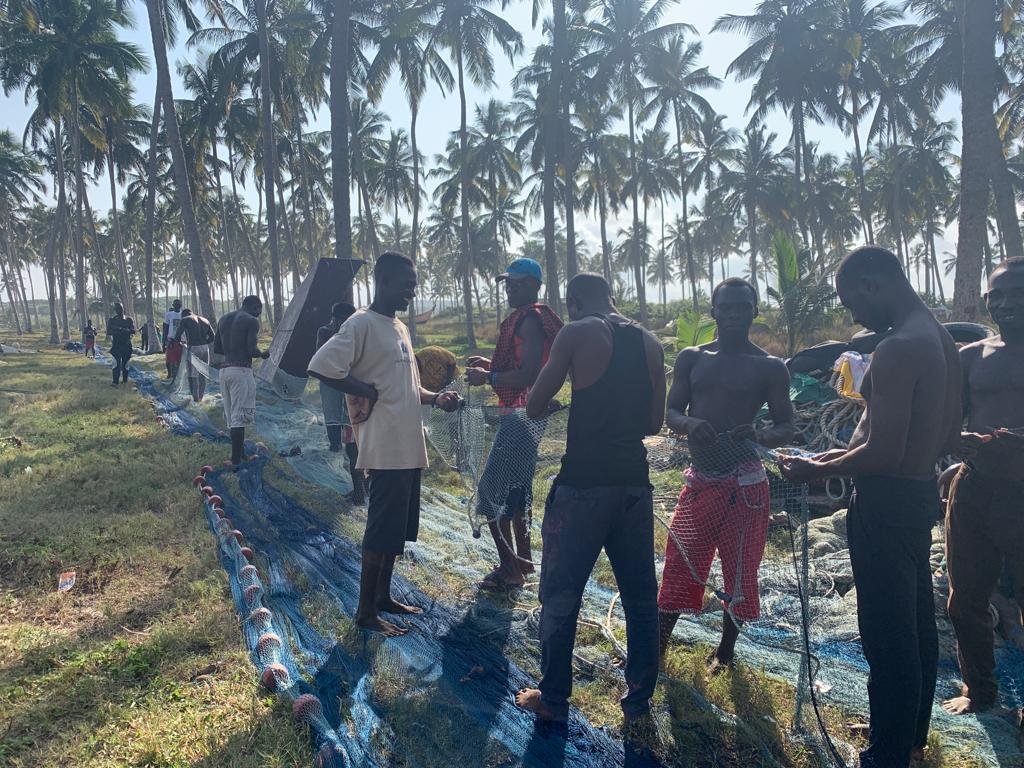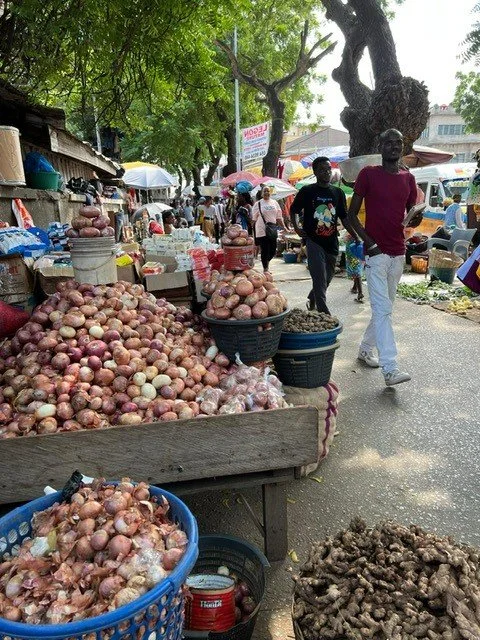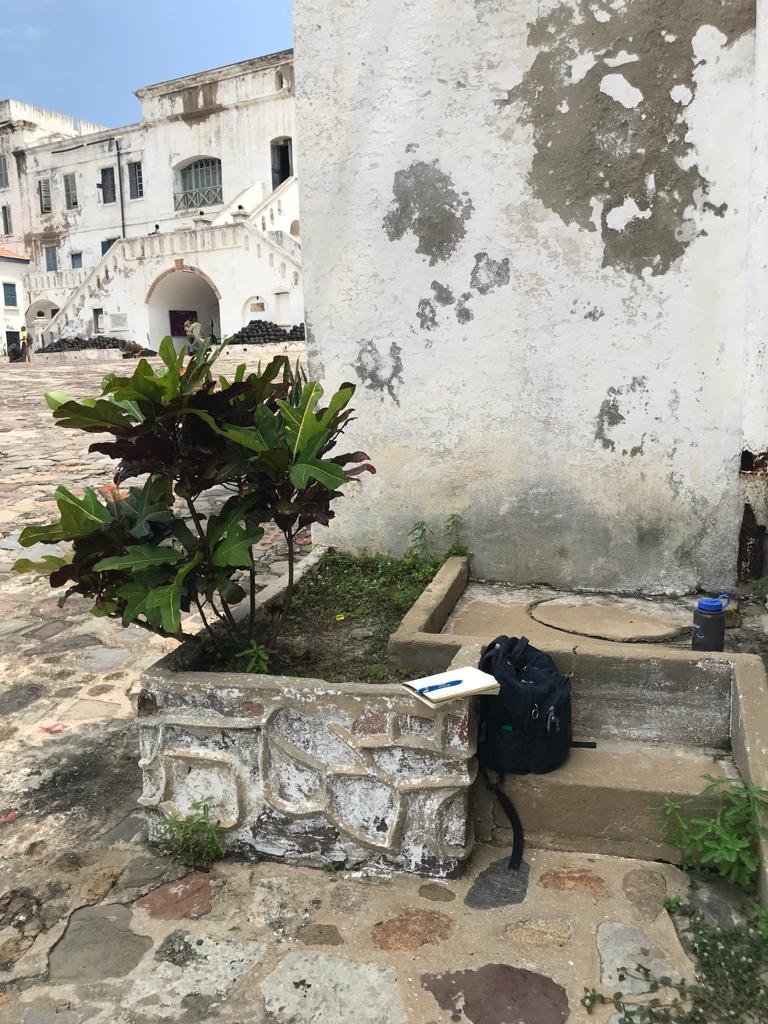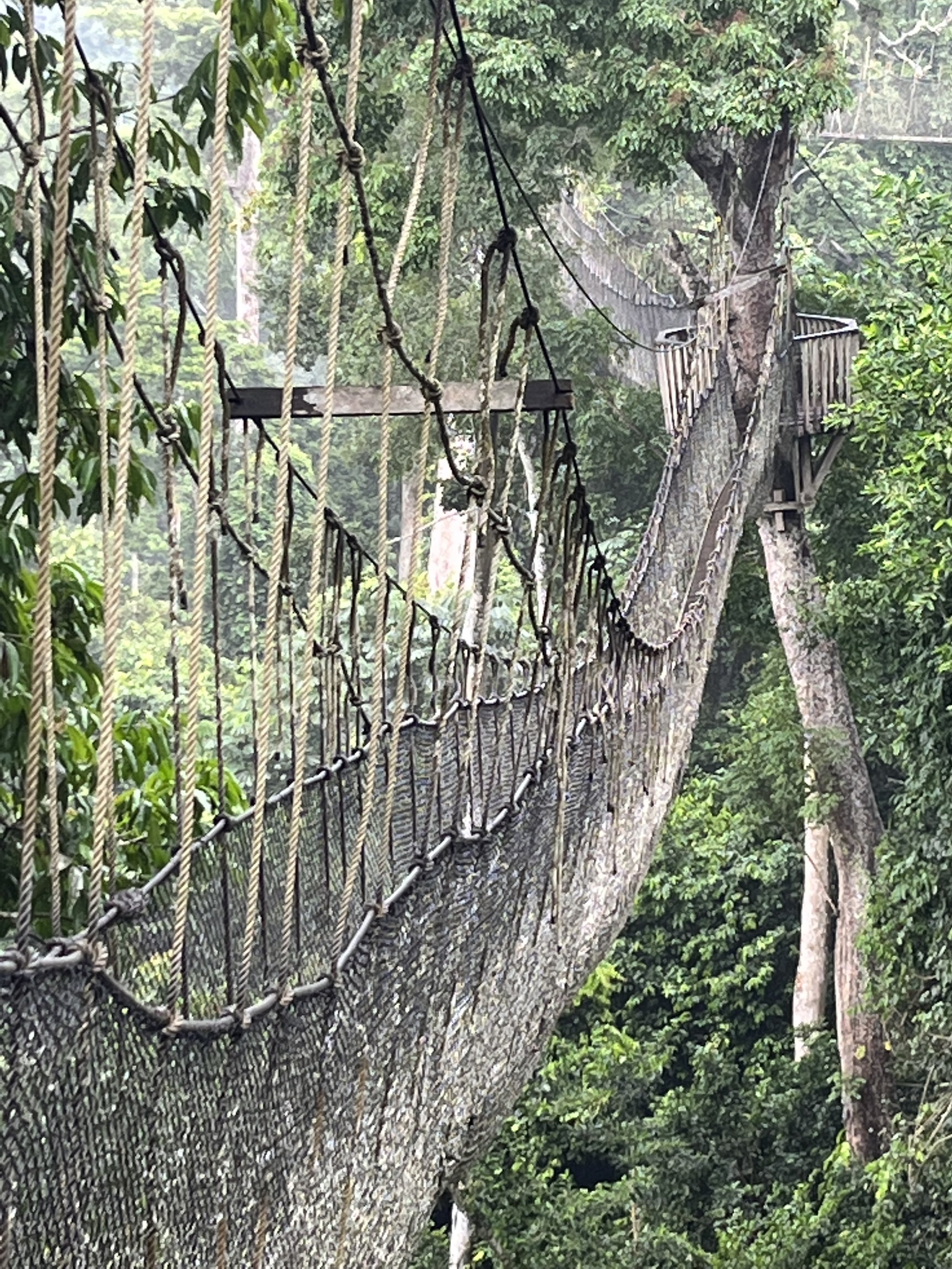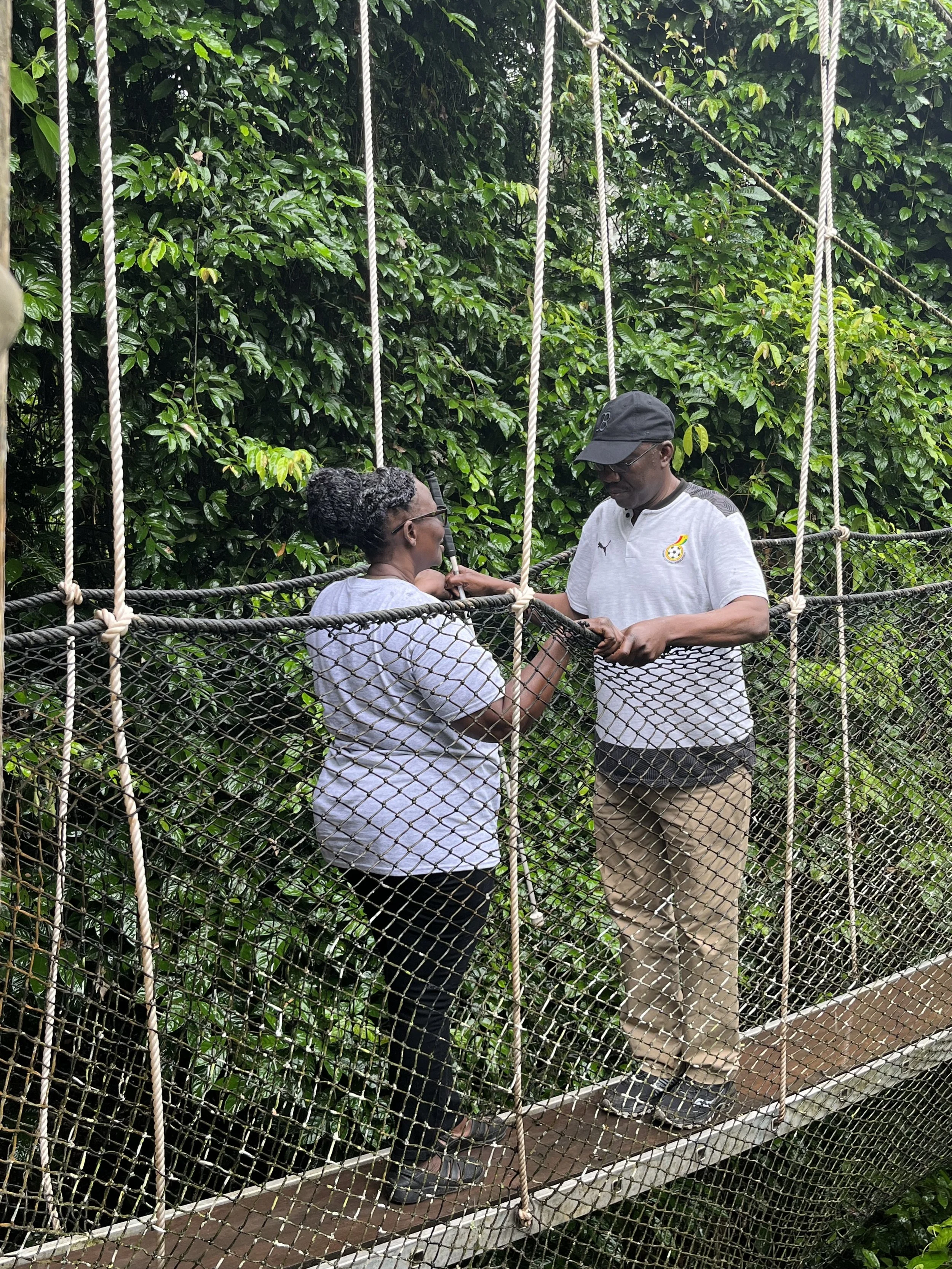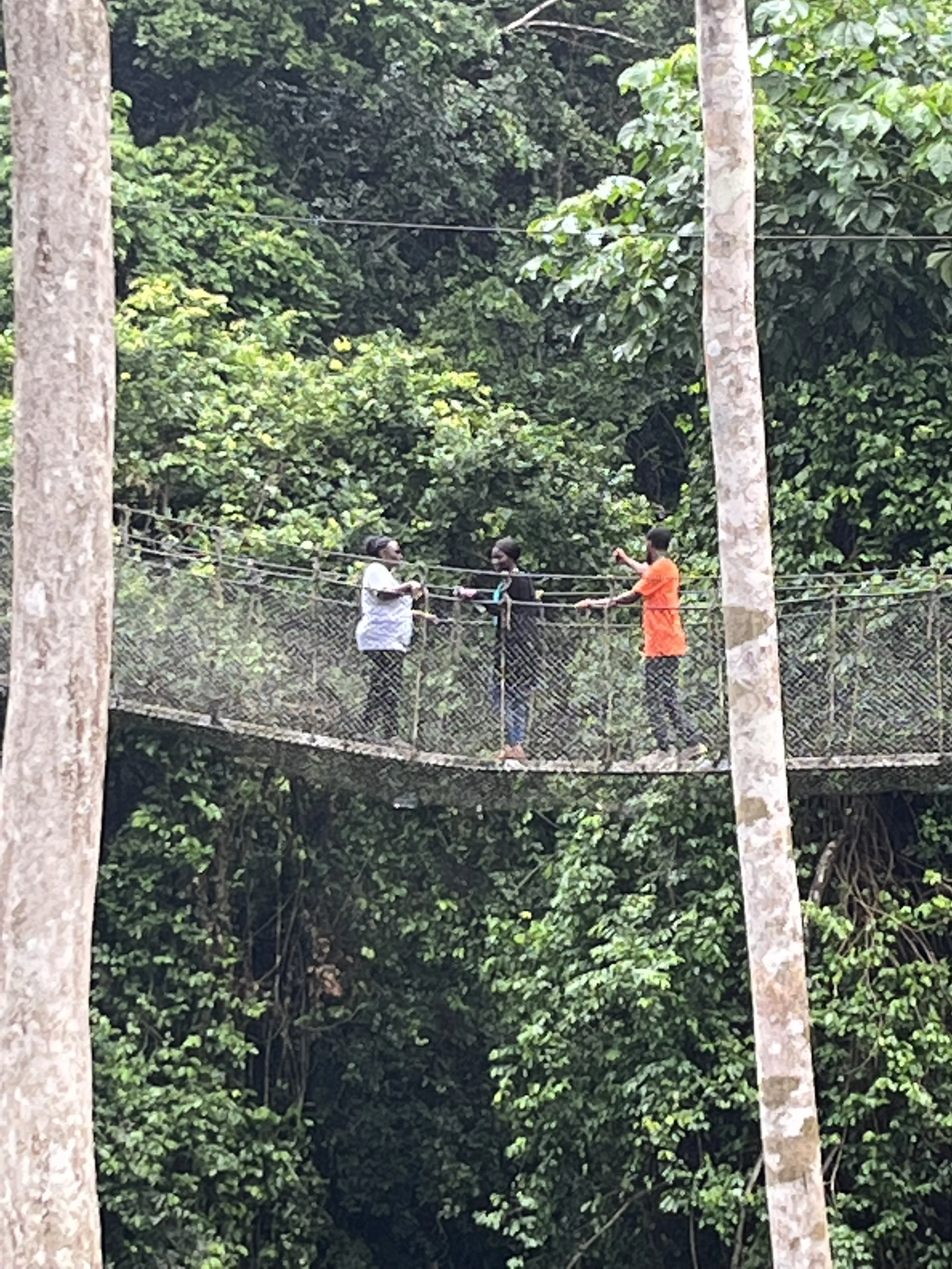Our visit to the Cape Coast Castle was one of the most impactful experiences I have ever had. Stepping into the first small cell of the dungeon, where at any one time 200 men were trapped, shackled, and suffering, immediately triggered a visceral response. Those who were captured and forced into these cells endured physical and emotional pain and terror that I can never begin to imagine.
When it was time to write our reflections I decided to revisit the dungeon we first walked into that evoked such a powerful response in my heart and body. I sat to write in my journal on the same ground that the enslaved men urinated, vomited, defecated, and died on. The life I live is one of such privilege. I have never and will never experience the racism that so many endure, and it is not fair to say I can even imagine what it is like. In order to honor those humans who were held captive in the dungeon, I chose to sit on the same grounds to connect myself to their experiences as best as I could. I closed my eyes to imagine the sight of people dying around me, the smell of vomit, feces, and dead bodies, the feeling of chains wrapped around me, and the sounds of wailing or the silence of pain and exhaustion. As I opened my journal, I looked at the cover which had the words “Happiness, Peace, Hope, Joy, Appreciation, Love.” I immediately recognized the contrast between these words and the feeling inside the dungeon, devastated and furious that the people held captive were stripped of each and every one of those.
These injustices were appalling. The strength and resiliency shown by Africans who were enslaved at these castles are unparalleled. We have to remember that the injustices are not over and show up in many forms in our world towards people of color. There is so much work that needs to be done and we need to continue taking action and creating change.
The feelings of anguish that were brought forth during our visit to the Cape Coast Castle on Monday heavily contrasted with Tuesday’s visit to the spacious Kakum National Park, surrounded by calming sounds and overall peace out in nature.
For some, completing the long canopy walk was a thrilling adventure. For others it required overcoming a strong fear, which provided a sense of accomplishment and pride.
Walking across the canopy demonstrated how step by step you can overcome the obstacle set before you. You prove to yourself that your inner strength and perseverance can literally and figuratively move you from point A to point B. As long as you are moving forward, it does not matter how quickly you go because you are making progress toward your goal.
I think of my students with language based learning disabilities who are faced with challenges every single day. It is always humbling to be faced with a challenge and remember the butterflies and tense muscles that sometimes accompany the nerves when trying something new or conquering a fear. Stepping out of one’s comfort zone and facing a fear is not always easy but it is necessary. A quote on my classroom wall reads “The bird who dares to fall is the bird who learns to fly.” Only when we take risks and step out of our comfort zone do we have the chance to learn, grow, and transform.
The canopy walk was a reminder that success does not always come easy, and it is with the support and encouragement from the community around you that can motivate and guide you through the many challenges life brings. The words of encouragement from our cohort members generated smiles and motivation from each person crossing the bridge. The walk reminded me that each of us has the ability to empower another person, which results in a stronger community. I have seen the value of community embedded into Ghanaian culture by the way people help each other on a daily basis, and it is evident that the world needs more of that. Together we can help each other overcome obstacles that we never imagined we could.
By Megan Saunders, Science Department Head, Carroll School, Lincoln, MA


